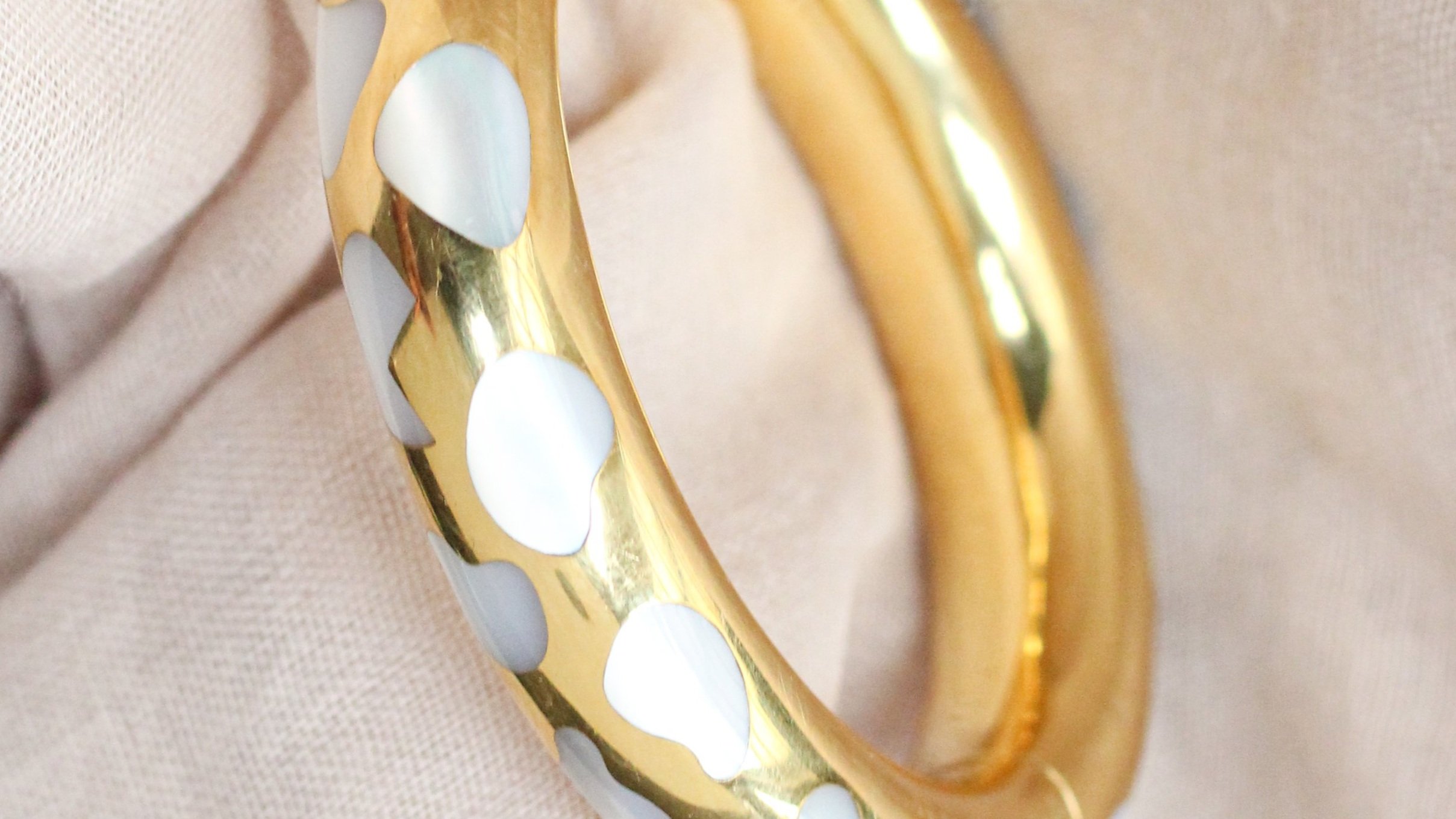Mother of Pearl
Mother-of-pearl is the colloquial name given to the iridescent nacre coating secreted within molluscs, such as oysters or abalone shells. Surprisingly, the colloquial name for this nacre derives from a now obsolete definition of the word ‘mother’, meaning ‘scrum, dregs or leftover filth’. Yet the name could also be interpreted as literally, with the iridescent coating extracted from the inside wall of the shell (mother’s womb) in which pearls grow.

-
Despite being effectively a natural waste product, mother-of-pearl has been imbued with its own aesthetic value, embraced as a key decorative material for centuries thanks to sharing a similar creamy lustre like pearls. Like pearls, mother-of-pearl can vary in colour, from a dark greenish or black shade to a pure white, or tinted with pastel hues from pink, yellow to blue.
Thin sheets of mother-of-pearl have traditionally been carved into buttons or set in men’s cufflinks, particularly popular in the 17th-19th centuries. In the 20th century the invention of mass-produced plastics imitating the milky sheen of mother-of-pearl caused the decrease in its use in clothing. Yet, mother-of-pearl has consistently been used inventively by lapidarists within ornate inlay designs on brooches, vanity cases or cigarette boxes. Van Cleef & Arpels most popular colour choice in their iconic Alhambra collection features mother-of-pearl, due to its neutral colour which transitions seamlessly to suit any occasion or outfit.

